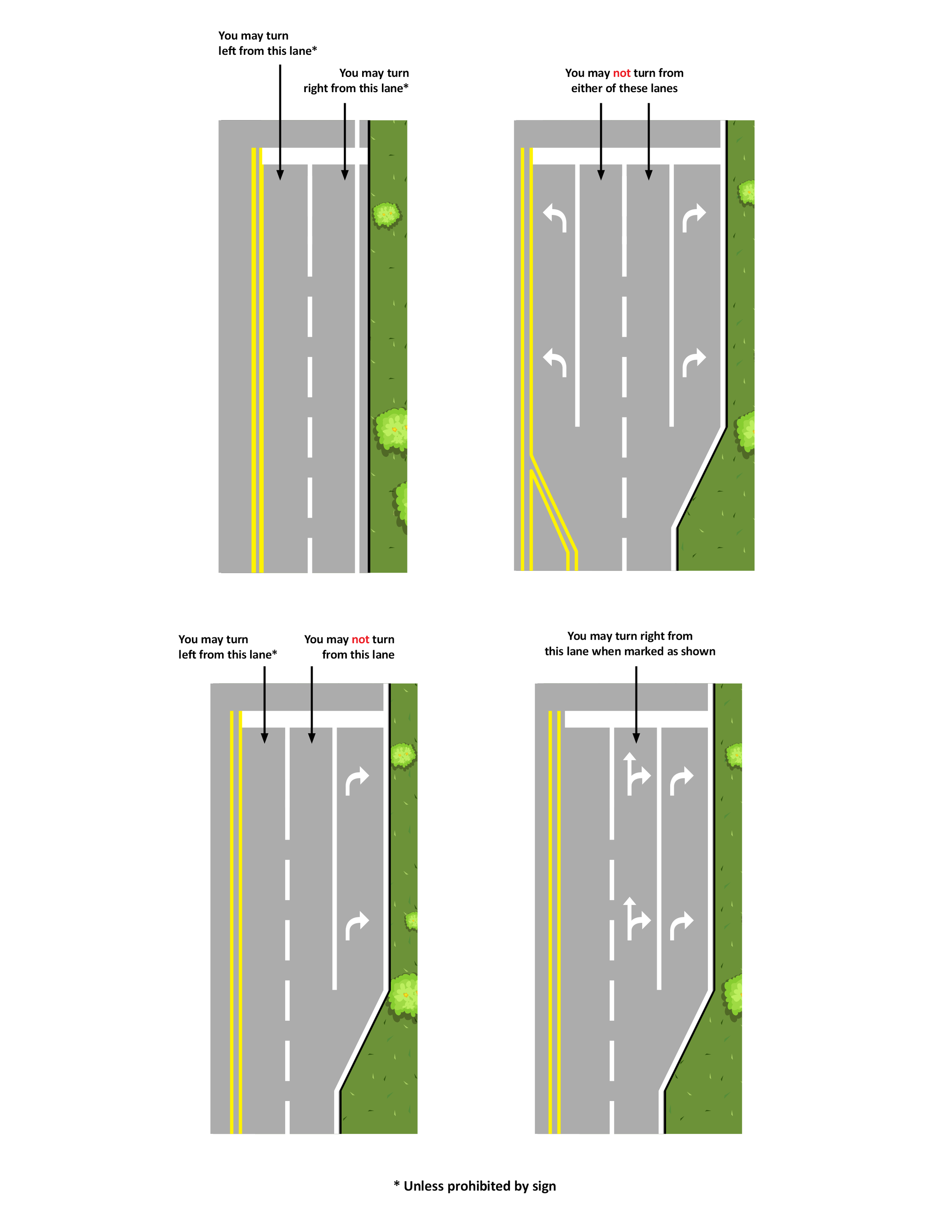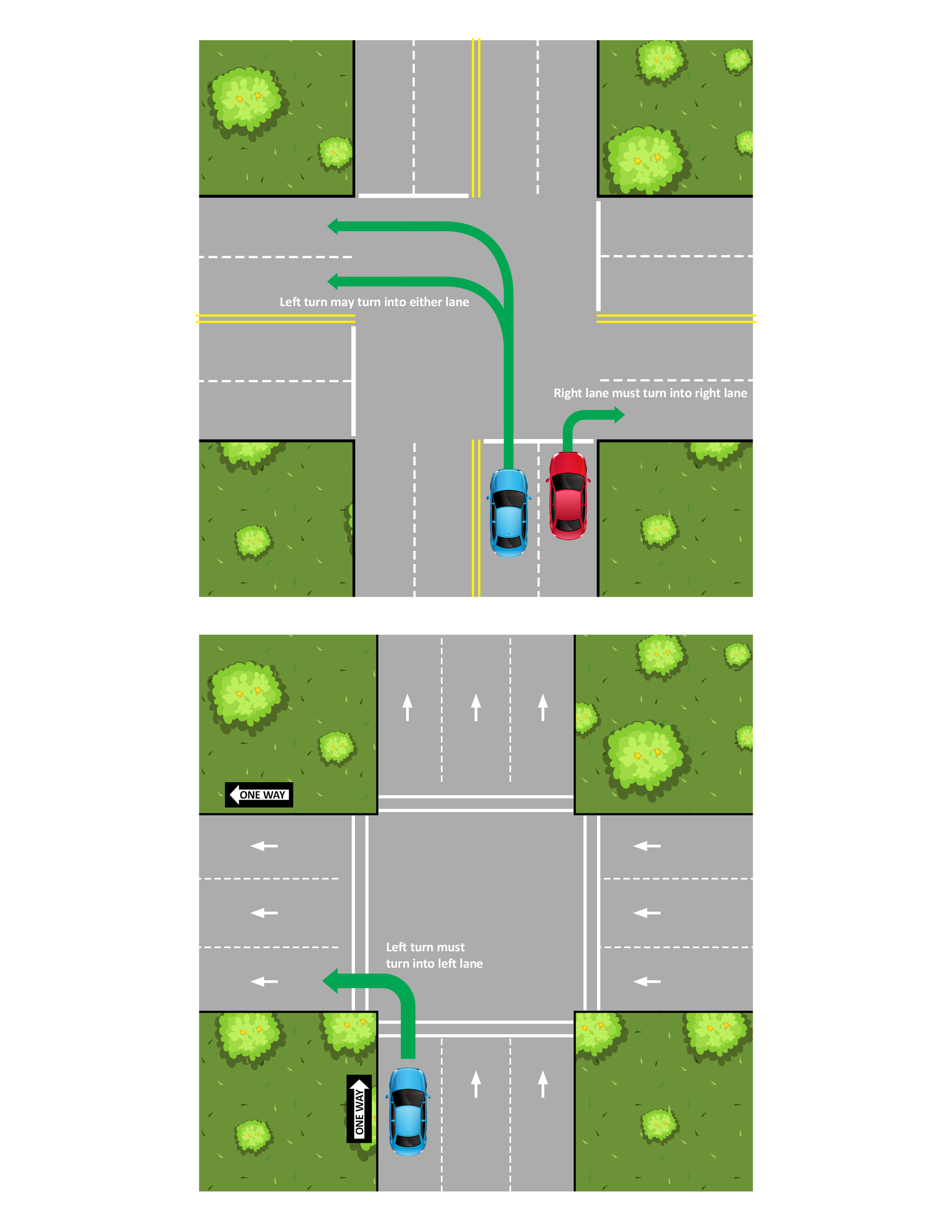Turning Properly at Texas Intersections
Millions of Texas drivers travel on the state’s roadways daily. Often, these drivers find themselves traveling through and turning at intersections. Understanding the rules that govern turns at intersections could help drivers avoid traffic tickets and motor vehicle collisions.
The Offense: Turning at Intersections
Section 545.101 of the Texas Transportation Code, titled “Turning at Intersections,” contains the rules for approaching and turning at intersections. The Section contains different rules for right and left-hand turns.
Right-Hand Turns at an Intersection
Section 545.101 contains two requirements for drivers attempting a right turn at an intersection:
First, the driver must approach the turn as closely as practicable to the right-hand curb or edge of the driveway; and
Second, the driver must also turn as closely as practicable to the right-hand curb or edge of the driveway.
Under Section 545.101, a driver must turn from and into the right lane at Texas intersections. Note, however, that the Texas Transportation Commission or a local authority can alter this rule by placing official traffic-control devices or signs near the intersection.
Left-Hand Turns at an Intersection
Section 545.101 contains two sets of rules for left-hand turns. When a driver turns left onto a street or roadway designated for two-way traffic, Texas law only requires a driver to arrive in a lane lawfully available to traffic moving in the driver’s direction. Thus, while drivers should always turn into the lane that interferes least with other traffic, Texas law does not require drivers turning left onto a two-way roadway to turn into the left lane.
However, Section 545.101 has a special rule for drivers who are turning left from a one-way roadway onto another one-way roadway. In that case, Section 545.101 requires the driver to turn as closely as practicable to the left-hand curb or edge of the roadway. In other words, Texas law requires drivers turning left from a one-way street onto another one-way street to turn from and into the left lane. As with the right-hand rule mentioned above, the Texas Transportation Commission or a local authority can alter any rules regulating left-hand turns by placing signs near the affected intersection.
Criminal Punishment and Civil Liability
A law enforcement officer can cite any driver who violates Section 545.101. A Texas driver cited for an improper turn at an intersection faces a penal fine between $1.00 and $200.00 and a possible driving conviction. However, a law enforcement officer is more likely to cite a driver for this offense if the improper turn caused or resulted in a motor vehicle collision.
In addition to a penal fine, a crash victim could use the driver’s violation of Section 545.101 to form the basis of an automobile insurance claim. Texas is a fault-based state. Therefore, Texas crash victims must prove that the at-fault driver is legally responsible for a motor vehicle accident to recover damages from the driver and the driver’s auto liability insurer.
Most injury lawyers use the legal cause of action known as “negligence” to hold an at-fault driver civilly responsible for a crash victim’s damages. A driver is negligent when he or she fails to act as a person of ordinary prudence would have under the same or similar circumstances. A driver could be negligent by failing to comply with the rules prescribed by Section 545.101 when turning at a Texas intersection. Under this theory, the injured party would show that the at-fault driver’s failure to comply with Section 545.101 (e.g., by making a wide right turn at an intersection) proximately caused both the collision and the resulting damages.
Speak With an Experienced Injury Lawyer Immediately After a Motor Vehicle Accident
Proving that another driver’s negligence caused a collision is not always easy. However, a good accident attorney could help by gathering and organizing the necessary evidence immediately after a motor vehicle collision. If someone turns improperly and crashes into your car, you have enough things to worry about. Do not let dealing with the at-fault driver’s insurance company be one of them. We deal with the insurance company so you can focus on getting your life back to normal. You have one chance to do this; make the right choice by choosing the right attorney. Call us at (956) 291-7870 or email us at contact@rdjlawyer.com for a free consultation and case evaluation.


